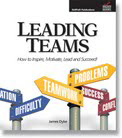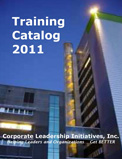Use Appreciative Inquiry
My last post inspired me to share an important insight into problem-solving that might be of real practical help to my readers.
Albert Einstein is [variously] quoted as saying, “We can not solve our problems with the same level of thinking that created them.” Most attempts at problem-solving use the same method (I teach it myself in my critical thinking seminars). It focuses on the things that aren’t working, and attempts to find ways to fix them:
- Step 1: Identify the problem
- Step 2: Analyze/determine the root cause
- Step 3: Brainstorm solutions
- Step 4: Evaluate your various solutions and pick one
- Step 5: Develop an action plan
This is a strategic and appropriate approach for many simple problems we encounter in the workplace. HOWEVER… there are many problems in life and in work that are NOT simple. They are complex. They have many “causes” that contribute to the situation (e.g. national healthcare; public education; employee motivation and morale!)
Don’t just start from scratch—take a look around!

A different approach is to change perspectives and examine the things that ARE working, in order to build on them and broaden their application and impact. This is called APPRECIATIVE INQUIRY, a method of problem-solving introduced in the mid 1980’s by David Cooperrider of Case Western Reserve University.
Go talk to someone who is successful at what you want to do

— Image by © Royalty-Free/Corbis
The simplest application of this method is something I have often encouraged new managers to do: Go talk to a successful manager in your organization; find out what they are doing to manage and lead effectively; and see if you can use or adapt their practices to YOUR team and YOUR situation.
Up Close and Personal
When I started my own consulting practice, I had no idea how to find clients (and no idea how to even start to solve that problem!). One of my consultant mentors told me, “It’s all about networking, Jim—many of my first clients were guys I went to business school with.” Unfortunately for me, my network was small to begin with, and most of my business contacts were retired and out of the loop! Providentially, I met a fellow consultant who was just a little farther down the road in success, and he shared his simple strategy with me. Happily, I found that it worked for me, too!
Here’s how to do it
Here are the Stages of Appreciative Inquiry (a tip of the hat to Mindtools):
- Stage 1: DEFINE the problem positively (e.g. “Ways to increase employee morale” NOT “What to do about grumpy employees”)
- Stage 2: DISCOVER – Find the best that worked in the past and is working now.
- Stage 3: DREAM – Think expansively about what might be possible.
- Stage 4: DESIGN – Now lay out what is needed to support the new vision.
- Stage 5: DESTINY/DELIVER – Actual implementation, requiring broad support.
The final stage requires a great deal of planning and preparation. It also requires all individuals involved to stay focused on the main vision, and to commit to supporting it with their own individual efforts in their own individual areas of responsibility. This creates a collection of changes all across the organization that ultimately supports the vision and makes it a reality.
Here’s what you need to pull this off:
- Get all of your stakeholders in the room, to share ideas and give feedback.
- Keep focused on your common ground (e.g. the vision) NOT your differences.
- Do your research. Look for the “best” – skills; skill sets; practices; processes; behaviors.
- Illustrate the “best” items with personal stories about them.
- Let the conversation be self-managed, with lots of dialogue.
- In the DESTINY stage, think about how to learn, adjust, improve, and empower people who are going to carry out the plan.
Next time you have a problem to solve, consider if appreciative inquiry might be a fitting approach–one that could shorten the process; save you and your team a lot of time; and set you quickly on the road to success!
Until next time… Yours for better leaders and better organizations,
Dr. Jim Dyke – “The Boss Doctor” ™ helping you to BE a better boss and to HAVE a better boss!


